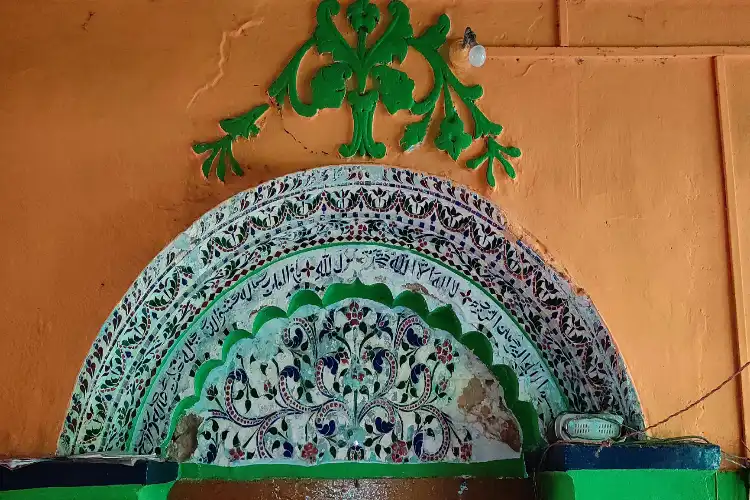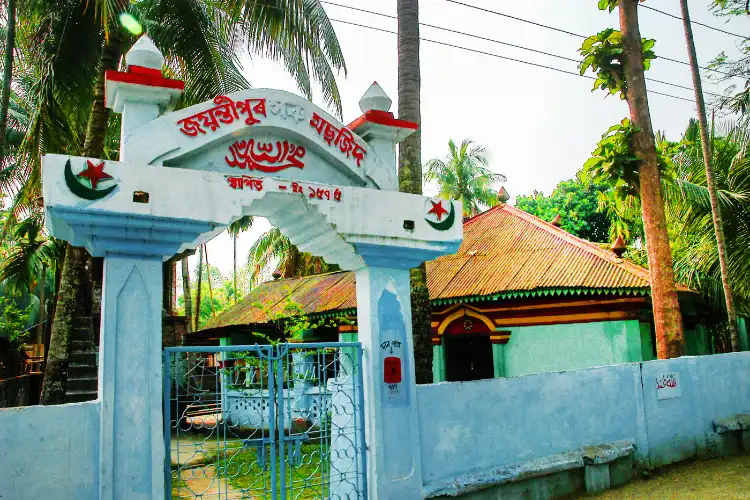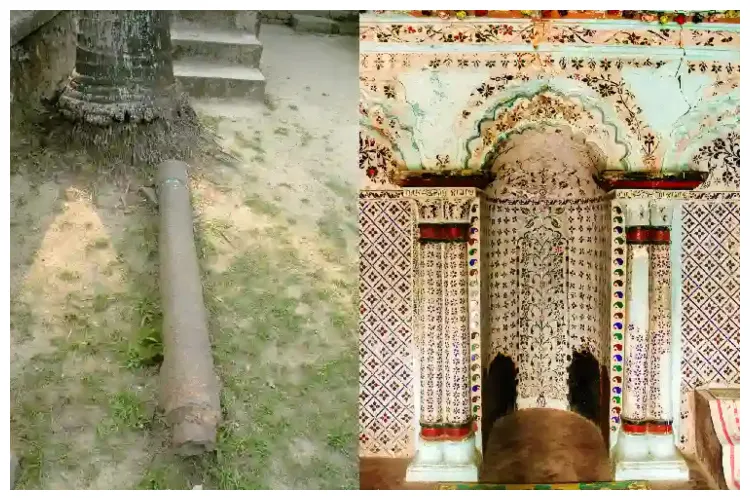
Ariful Islam/Guwahati
The other mosque was built in the same locality in 1575 AD and is now known as ‘Budha Ganyan Masjid' or Horu Masjid.

Horu mosque
Talking to Awaz-the Voice, advisor to the Bor Masjid management committee Intaz Ali said: “The mosque built during the beginning of the neo-Vaishnavite spread in Assam, has a rich background. One can’t undermine the Vaishnavite architectural influence in this mosque. A mason, who belonged to the fishermen community, was brought from Dhaka to build it. The construction of the mosque started with the erection of two laikhutas (foundation pillars) of basil (tulshi) like those found in the Vaishnavite naamghars (community prayer halls). The structure still exists inside the mosque. According to our forefathers, leaders of various faiths, including Harsha Mouda of the Bodo community, were present at laying of the foundation stone of the mosque and took initiative for its construction.”
This mosque, a mix of Assamese and Islamic architecture, was the first concrete mosque in Assam. The mosque’s structure at Jayantipur resembles those of naamghars. Ali said: “The sultana khana (sanctum Sanctorum) of the mosque is decorated with colourful glass shaped like gems and arranged in floral designs. The glass pieces are also used to emblazon the verses of the Holy Quran inside the mosque.”
There are many similarities between the Assamese naamghar and the mosque in Jayantipur. Apart from the laikhutas, the mosque has two kalchis (miniature brass domes), used in naamghars, on the roof. There is no mosque in the world with such structure atop the roof. The entrance to the mosque is modeled on the lines of the main entrance to the Kaaba in Mecca.
It is believed that each family had to contribute a specifically sized container of sticky rice flour and black gram (urad dal) flour for its construction. The mosque was constructed with a mixture of powdered brick, rice, and black gram flour as cementing material. The bricks required for the construction of the mosque were made by the Moriya people. Three types of bricks are used in it. The village elders say that two types of bricks used in the mosque have a resemblance to those used in the construction of the Ranghar (amphitheater of Ahom era) and Kareng Ghar (Ahom palace) located in or around Sivasagar in eastern Assam.

Remanants of a cannon of the Ahom era in Bor mosque and glasswork in Horu mosque (right) Picture credit: Samsul Huda Patgiri
The architecture of Horu Masjid or Budha Ganyan Masjid in Kaliabor is not different from that of Bor Masjid. The mosque was built in 1575 during the reign of the Suklengmung. Like the Bor Masjid, there is laikhuta inside and miniature brass domes over the roof. It is worth mentioning that during the construction of these two mosques, limestone, black gram, certain freshwater fishes, and sticky rice flour were used to make cement.
Just as Muslims in Kaliabor bow their heads when they pass through a naamgharor or a satra, the Hindus do the same when they pass across mosques and dargahs. Noted scientist Dr. Gakul Goswami said in addition to donating financially, the Moriyas also extended physical labour for the reconstruction of the Bholaguri Satra (a Vaishnavite monastery) after it was gutted in devastating fire hundreds of years ago.
Both mosques suffered minor damage during the 1950 earthquake and were repaired later.
